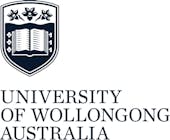I am in science like a dog who sees a squirrel... easily distracted.
Thankfully, my field of research, Geochemistry, allows me to give into limitless curiosity. Prof. Francis Albarede once quoted Karl Turekian (one of the founders of the field) who said: "No scientific field is immune to Geochemistry". This was particularly appropriate since Prof. Albarede was giving a lecture about its application to diseases!
At University of Wollongong, I founded the Wollongong Isotope Geochronology Laboratory (WIGL) to tackle a wide range of questions:
What was the Earth like 600-800 million years ago? This is an important slice of our planet's history since it underwent several 'Snowball Earth' episodes (imagine a planet-sized snowball!), and shortly after the first animals emerged (although cute cats videos came in much later).
How does Earth's surface respond to climate change? Our mountains, rivers, soils 'breath in and out' in response to natural (and now human-driven) climate change. What happens when we turn up and down rainfall, temperature? The interaction between climate and the environment is a complex one, but critical to understand the evolution of our soil and water resources.
How did we become what we are today? when did we start to irreversibly affect our environment? This one has to do with human evolution and its impact on Earth's resource. I study how the diet of early humans evolved, how ecosystems changed around them, and I also look for traces in the geological record of human impact on the environment.
What can heavy metal(s) tell us on diseases? No, it's not about the music (as much as I love it), but about how copper, iron, zinc and other elements can help us understand, and maybe better diagnose, the development of diseases. This new, fast-growing field covers a range of pathologies: cancers, Alzheimer's Disease, Amyotrophic Lateral Sclerosis and more.
Experience
-
2014–presentAssociate Professor, University of Wollongong
Education
-
2003Universite Paris 7, PhD
- Wollongong, Australia
- Website
- @Dr_IsoTony
- Article Feed
-
For media enquiries,
tonyd@uow.edu.au - ORCID
- Joined


